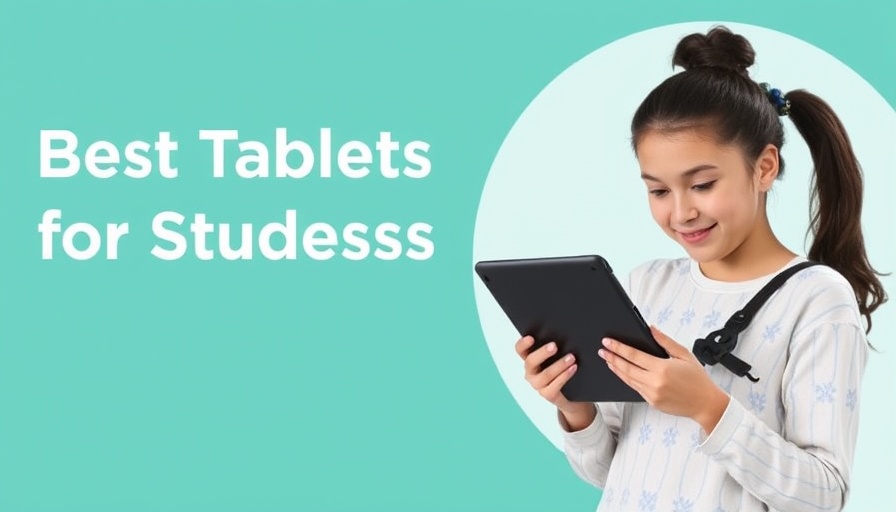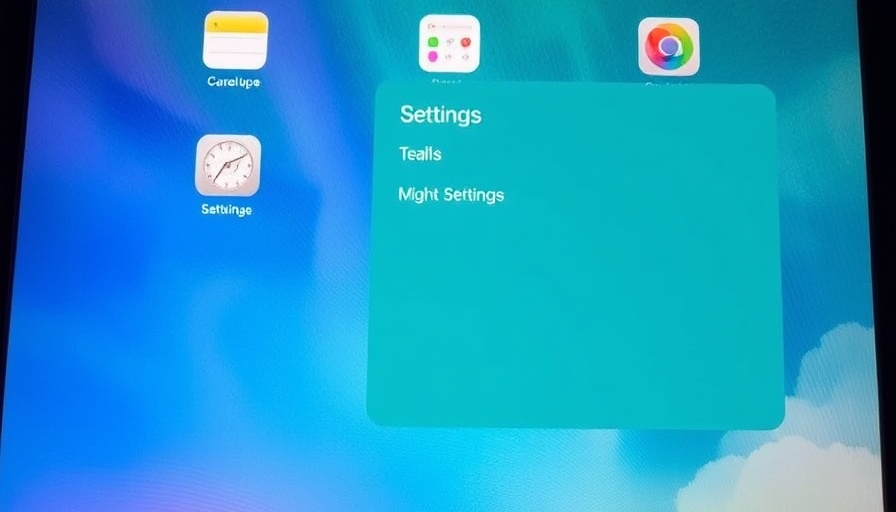
Embracing the Future: The Rollable ThinkBook's Revolutionary Design
In a world where technology is continually advancing, Lenovo has delivered a remarkable innovation with its $3,300 rollable ThinkBook Plus Gen 6. At first introduced at CES, this device challenges traditional notions of laptop design—featuring an extendable 120Hz OLED display that aims to redefine productivity and user experience. Unlike typical fixed size screens, this innovation adapts to the user’s needs, creating a workspace that can be modified to fit different contexts, whether for complex tasks or casual browsing.
Enhanced User Experience: What’s Behind the Technology?
One of the standout characteristics of the ThinkBook Plus Gen 6 is its portrait-style display, offering a total of 16.7 inches that provides ample screen real estate for multitasking. The vibrant display, complemented by a haptic touchpad, promises a smoother interaction, mimicking the feel of natural touchscreen use. Users report that the visual quality of the OLED panel is breathtaking, with colors popping and deep contrasts, which makes streaming and gaming a lavish experience.
Pricing: A High Barrier to Entry
Nevertheless, such innovation comes at a steep price. Starting at $3,300, the ThinkBook's cost may deter many potential buyers. This brings us to the broader conversation about how much consumers are willing to pay for cutting-edge technology. For die-hard tech enthusiasts and professionals who require versatility, the device may seem like a worthy investment; however, it raises concerns about accessibility for the average consumer.
Comparative Insights: How Does It Stack Up Against Traditional Devices?
To put things into perspective, let’s consider how the rollable ThinkBook compares to traditional laptops. Many standard laptops, particularly those within the same price range, offer high-performance specifications with stationary designs. Users must weigh the benefits of portability and size against the functions of established brands. Despite the impressive technology, some worry about the durability of rollable screens and whether practical problems—like visible creasing—will overshadow their groundbreaking features.
Counterarguments: Diverse Perspectives on Rollable Screens
While some tech aficionados are enthusiastic about Lenovo's approach, others express caution. Skeptics argue that the visible creasing on the display might not only affect aesthetics but could potentially impact the usability and longevity of the product. Moreover, concerns surrounding the limited I/O options on the ThinkBook must be addressed, especially as connectivity becomes more essential for workflow. The debate surrounding the practicality of rollable screens versus functional standard designs continues, with valid points emerging on all sides.
Future Trends: Screen Technology Leading Us Forward
The rollable display technology showcased in Lenovo's ThinkBook hints at a larger trend in the tech industry that pushes boundaries with flexible displays. As manufacturers experiment with shapes and sizes, we may witness a future where devices seamlessly integrate into day-to-day life, adapting to our unique situations and needs. Future iterations will likely enhance durability concerns and battery efficiency, both critical factors in improving user experience.
Merging insights from both enthusiastic users and cautionary tales presents a balanced view for potential buyers. Is the Lenovo ThinkBook Plus Gen 6 the laptop of the future or merely a trend? Only time will tell. The impressive features accompanied by the high price point create a fascinating dynamic for consumers today. With advancements in technology continuing at a breakneck pace, remaining informed will empower users to make smarter choices in their tech investments.
As we reflect on this innovation, it’s essential to stay engaged in conversations about evolving technologies. You deserve to explore options that align with both your lifestyle and budget. Whether you’re entranced by the rollable screen’s flexibility or prefer the reliability of established models, the key is to choose what best serves your needs. Stay informed and adapt to the evolving landscape of technology.
 Add Row
Add Row  Add
Add 




Write A Comment